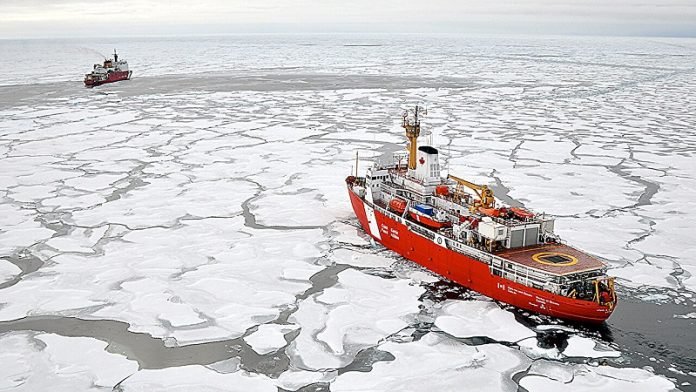
The Arctic Ocean is warming four times faster than the rest of the world’s oceans, and this rapid warming could lead to significant changes in global weather patterns and climate.
To better understand these changes, scientists are studying Arctic ocean currents through initiatives like the Synoptic Arctic Survey.
One innovative way scientists track ocean currents is by using radioactive isotopes. These isotopes, or radionuclides, were first released into the environment during nuclear testing in the 1950s.
While those initial radionuclides are now too dispersed to trace, nuclear reprocessing plants continue to release two specific radionuclides into the Atlantic Ocean: iodine-129 and uranium-236.
In a study published in the Journal of Geophysical Research: Oceans, researcher Annabel Payne and her team used these radionuclides to trace the path of water from the Atlantic Ocean into the Arctic Ocean’s Canada Basin.
They analyzed samples from the deep Canada Basin, collected during the 2020 Beaufort Gyre Observing System/Joint Ocean Ice Study expedition.
The researchers discovered that water flowing into the Canada Basin follows two distinct routes. One path crosses the Chukchi Plateau and Northwind Ridge, while the other follows the perimeter of the Chukchi Plateau.
Additionally, they found that 25-40% of winter water from the Pacific Ocean contains markers of Atlantic water by the time it reaches the Canada Basin.
This mixing occurs due to upwelling, a process where deeper water rises to the surface, along the Alaskan Beaufort Shelf or in Barrow Canyon, which lies between the Chukchi and Beaufort Seas.
Comparing their results to previous studies, the researchers noted that the transit times for Atlantic waters into the Arctic have remained stable over the past 15 years. This suggests that the currents in this region have not changed significantly during this period.
This research confirms that iodine-129 and uranium-236 are effective tracers for tracking water masses in the Arctic Ocean. By using these tracers, scientists can gain a high-resolution view of the currents in this rapidly changing region.
The study’s authors propose expanding future research to include the continental slope near Greenland and the Canadian Archipelago. This will help reveal how water flows out of the Arctic Ocean and into the Atlantic Ocean, further improving our understanding of the Arctic’s changing dynamics.
Understanding the complex currents of the Arctic Ocean is crucial as it warms at an unprecedented rate. By using radioactive isotopes to trace these currents, scientists can better predict future changes and their potential impact on global climate patterns.
This research represents a significant step forward in our ability to monitor and understand the Arctic’s unique and rapidly evolving environment.
Source: American Geophysical Union.



